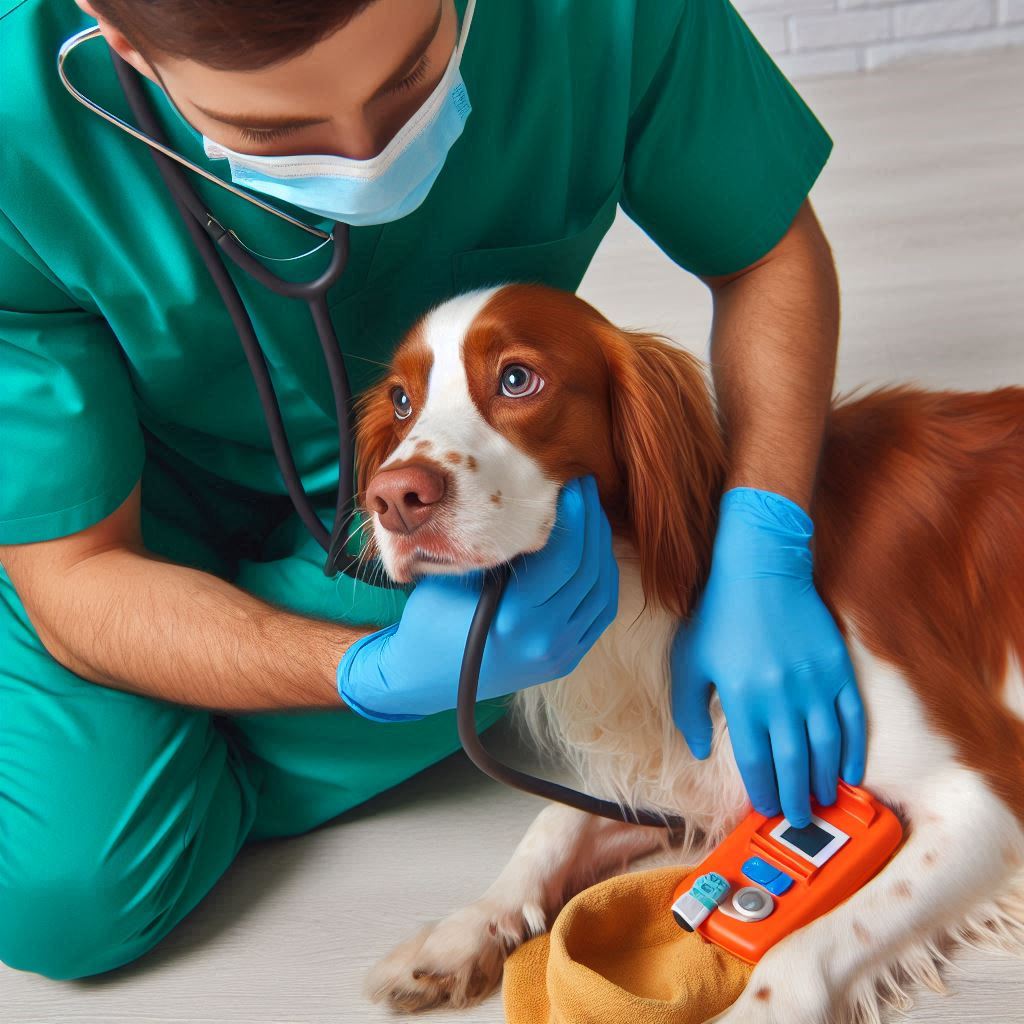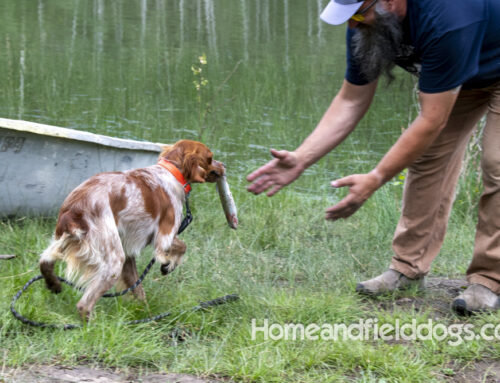As the summer months bring soaring temperatures, it’s crucial for dog owners to be vigilant about heat-related illnesses in their pets. French Brittanys, like all dogs, are susceptible to heat exhaustion and heat stroke, conditions that can quickly become life-threatening. This article will explore the differences between heat exhaustion and heat stroke, how to recognize their symptoms, and provide essential first aid measures and prevention tips.
Heat Exhaustion vs. Heat Stroke
Heat Exhaustion
Heat exhaustion is a milder form of heat-related illness and occurs when a dog’s body temperature rises beyond the normal range but has not yet reached critical levels. In this stage, the dog’s body is struggling to cool down but can still regulate its temperature to some extent.
Symptoms of Heat Exhaustion:
- Heavy panting: One of the first signs that your dog is overheating.
- Excessive drooling: Dogs often drool more as they attempt to cool themselves.
- Increased thirst: A dehydrated dog will drink more water.
- Weakness and lethargy: Your dog may appear tired and unwilling to move.
- Vomiting or diarrhea: These symptoms can occur as the condition progresses.
Heat Stroke
Heat stroke is a severe and potentially fatal condition that occurs when a dog’s body temperature exceeds 104°F (40°C). At this point, the dog’s body can no longer regulate its temperature, leading to organ failure and, if untreated, death.
Symptoms of Heat Stroke:
- Excessive panting and drooling: Even more pronounced than during heat exhaustion.
- Bright red gums and tongue: Indicating overheated mucous membranes.
- Rapid heartbeat: The heart pumps faster to try and cool the body.
- Glazed eyes and confusion: Possible signs of neurological distress.
- Weakness, collapse, or seizures: Severe symptoms signaling an emergency.
- Dry or sticky gums: Indicative of extreme dehydration.
First Aid Measures
For Heat Exhaustion:
- Move to a cooler environment: Get your dog out of the heat immediately.
- Offer water: Allow your dog to drink small amounts of cool (not cold) water.
- Apply cool water: Use a damp cloth or sponge to gently apply cool water to your dog’s fur and skin, particularly on the belly and paws. Using Rubbing alcohol on the pads and belly and inside of the ears is faster and dispels more heat than water
- Monitor closely: Keep an eye on your dog for signs of improvement or worsening symptoms.
For Heat Stroke:
- Emergency vet visit: Heat stroke is a medical emergency. Take your dog to the veterinarian immediately.
- Cooling measures: While transporting your dog to the vet, you can start cooling them by placing cool, wet towels on their body, focusing on the head, neck, and chest. Using rubbing alcohol is much better on pads of feet, belly and inside of ears.
- Avoid ice or very cold water: Sudden temperature changes can cause shock.
Prevention Tips
Preventing heat-related illnesses is the best approach to keeping your French Brittany safe during hot weather:
- Limit exercise: Avoid vigorous activity during the hottest parts of the day. Opt for early morning or late evening walks.
- Provide shade and water: Ensure your dog has access to plenty of fresh water and shaded areas when outdoors.
- Use cooling products: Cooling mats, vests, and dog-safe fans can help keep your pet comfortable.
- Never leave in a parked car: Temperatures inside a parked car can rise rapidly, even with the windows cracked.
- Know your dog’s limits: Be aware of your dog’s tolerance to heat, especially if they are older, overweight, or have a pre-existing health condition.
By understanding the symptoms and taking proactive steps, you can ensure that your French Brittany enjoys a safe and healthy summer.
For more detailed information on heat stroke and heat exhaustion in dogs, refer to sources such as the American Kennel Club and Animal Emergency Service.
Stay informed and prepared to act quickly in order to protect your beloved pet from the dangers of extreme heat.






Leave A Comment